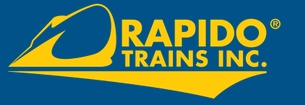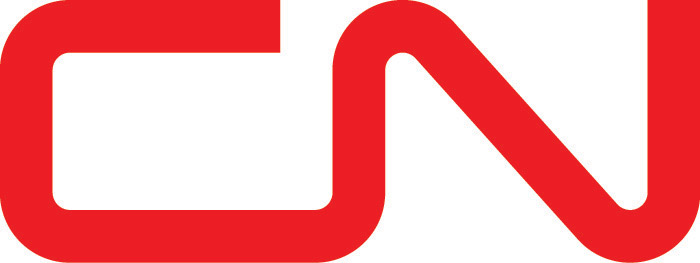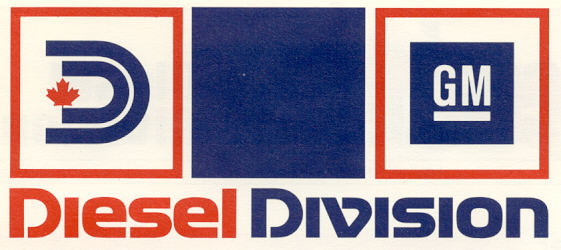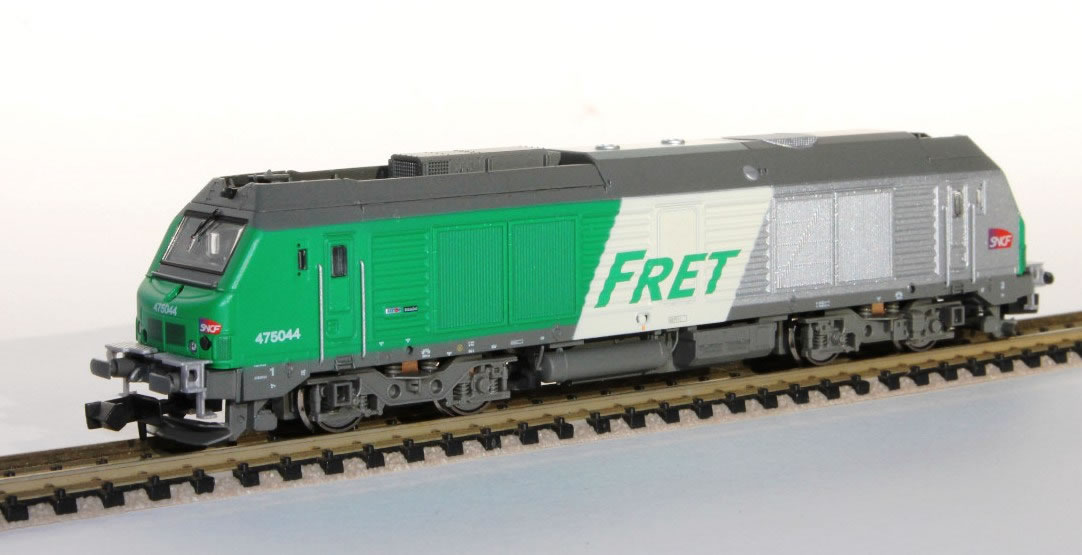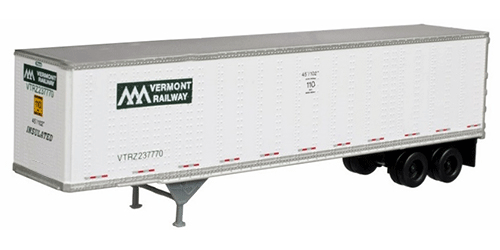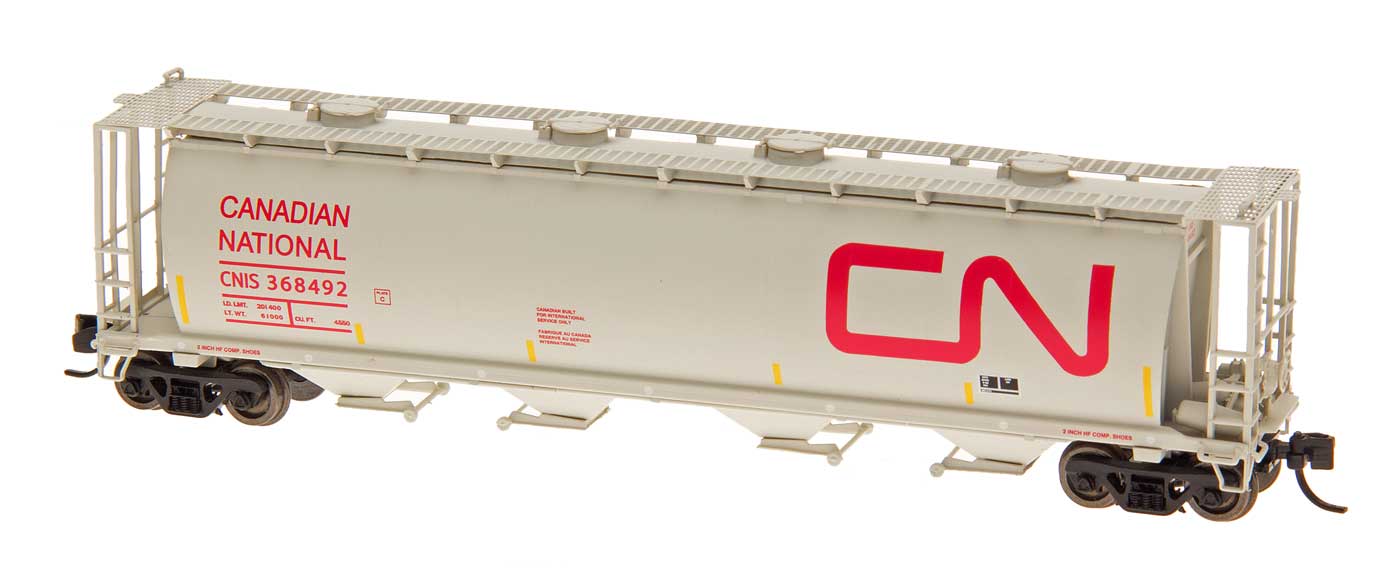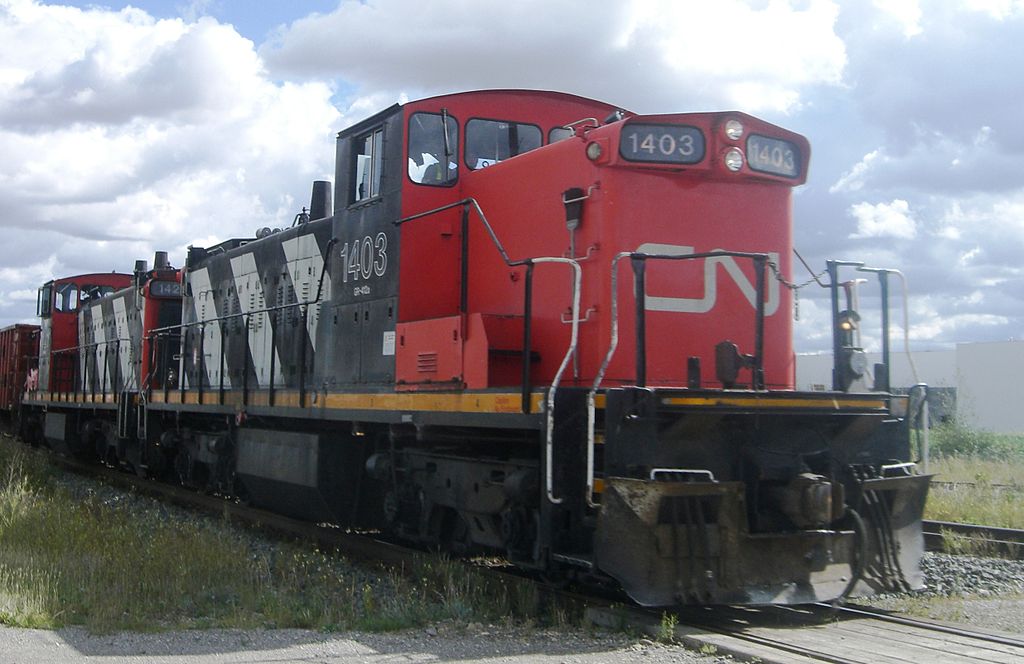Specific Item Information: factory equipped with Digitrax DN136D
Model Information: This Rapido GMD-1A 1600-series model features:
In 1988 CN rebuilt 15 more GMD-1 locomotives for continued branchline use on the Prairies. This was a major rebuild performed by CN's Pointe St-Charles shops in Montreal. The batteries were removed from the short hood and replaced with a chemical toilet and access door and the batteries were moved outboard beside the short hood. The units received anticlimbers, ditch light brackets, straight exhaust stacks and several mechanical upgrades. The cabs were re-oriented to run short hood forward, and interior facilities were improved - they now had a fridge! The 1600-series units were called GMD-1A and received the class designation GR-612A.
- N Scale DC/DCC dual mode (Digitrax factory decoder equipped) or equipped with an ESU DC/DCC/SOUND LokSound decoder
- Dummy plug included with silent models for optional straight DC operation
- 5-pole, skew-wound motor with excellent slow-speed performance
- Accurate dimensions from GMD blueprints and field measurements
- Heavy, die-cast chassis for great pulling power;
- Accurate 1000-series (6-axle) and 1600-series (rebuilt GMD-1A) variations
- A-1-A trucks with prototypically sized 40″ and 33″ wheels
- Full cab interior oriented the correct way (long hood forward for CN 1000-series, short hood forward for NAR and 1600-series)
- Body-mounted Micro-Trains couplers
- Up to six road numbers plus unnumbered for each paint scheme
- True GMD-1 sounds recorded from #1118 (formerly #1018) on the Alberta Prairie Railway
In 1988 CN rebuilt 15 more GMD-1 locomotives for continued branchline use on the Prairies. This was a major rebuild performed by CN's Pointe St-Charles shops in Montreal. The batteries were removed from the short hood and replaced with a chemical toilet and access door and the batteries were moved outboard beside the short hood. The units received anticlimbers, ditch light brackets, straight exhaust stacks and several mechanical upgrades. The cabs were re-oriented to run short hood forward, and interior facilities were improved - they now had a fridge! The 1600-series units were called GMD-1A and received the class designation GR-612A.
Prototype History: The GMD GMD-1 is a diesel locomotive originally produced by General Motors Diesel (GMD), the Canadian subsidiary of General Motors Electro-Motive Division, between August 1958 and April 1960. This switcher locomotive was powered by a 12-cylinder EMD 567C diesel engine, capable of producing 1,200 horsepower. The GMD-1 was built on either Flexicoil A1A-A1A (for light rail prairie branchlines) or Flexicoil B-B trucks. 101 examples of this locomotive were built for Canadian railways. 96 went to Canadian National Railway and the remaining 5 went to Northern Alberta Railways (that later became part of CN's fleet when they acquired majority interest in NAR).
The 1000-series GMD-1 features A-1-A trucks to distribute its 120 tons over six axles and allow travel on light rail branches in the Prairies. The 1000-series GMD-1 was intended mainly for freight service, with its 65 MPH gearing and lack of a steam generator or pass-through steam lines. However, they could be used with Steam Generator Cars as their cabs were equipped with steam generator controls and blowdown buttons. All 78 1000-series GMD-1 locomotives were delivered between 1958 and 1960.
The 1000-series GMD-1 features A-1-A trucks to distribute its 120 tons over six axles and allow travel on light rail branches in the Prairies. The 1000-series GMD-1 was intended mainly for freight service, with its 65 MPH gearing and lack of a steam generator or pass-through steam lines. However, they could be used with Steam Generator Cars as their cabs were equipped with steam generator controls and blowdown buttons. All 78 1000-series GMD-1 locomotives were delivered between 1958 and 1960.
Road Name History: The Canadian National Railway Company (reporting mark CN) is a Canadian Class I railway headquartered in Montreal, Quebec that serves Canada and the Midwestern and Southern United States. CN's slogan is "North America's Railroad". CN is a public company with 24,000 employees. It had a market capitalization of 32 billion CAD in 2011. CN was government-owned, having been a Canadian Crown corporation from its founding to its privatization in 1995. Bill Gates was, in 2011, the largest single shareholder of CN stock.
CN is the largest railway in Canada, in terms of both revenue and the physical size of its rail network, and is currently Canada's only transcontinental railway company, spanning Canada from the Atlantic coast in Nova Scotia to the Pacific coast in British Columbia. Its range once reached across the island of Newfoundland until 1988, when the Newfoundland Railway was abandoned.
Following CN's purchase of Illinois Central (IC) and a number of smaller US railways, it also has extensive trackage in the central United States along the Mississippi River valley from the Great Lakes to the Gulf of Mexico. Today, CN owns about 20,400 route miles (32,831 km) of track in 8 provinces (the only two not served by CN are Newfoundland & Labrador and Prince Edward Island), as well as a 70-mile (113 km) stretch of track (see Mackenzie Northern Railway) into the Northwest Territories to Hay River on the southern shore of Great Slave Lake; it is the northernmost rail line anywhere within the North American Rail Network, as far north as Anchorage, Alaska (although the Alaska Railroad goes further north than this, it is isolated from the rest of the rail network).
The railway was referred to as the Canadian National Railways (CNR) between 1918 and 1960, and as Canadian National/Canadien National (CN) from 1960 to the present.
Read more on Wikipedia.
CN is the largest railway in Canada, in terms of both revenue and the physical size of its rail network, and is currently Canada's only transcontinental railway company, spanning Canada from the Atlantic coast in Nova Scotia to the Pacific coast in British Columbia. Its range once reached across the island of Newfoundland until 1988, when the Newfoundland Railway was abandoned.
Following CN's purchase of Illinois Central (IC) and a number of smaller US railways, it also has extensive trackage in the central United States along the Mississippi River valley from the Great Lakes to the Gulf of Mexico. Today, CN owns about 20,400 route miles (32,831 km) of track in 8 provinces (the only two not served by CN are Newfoundland & Labrador and Prince Edward Island), as well as a 70-mile (113 km) stretch of track (see Mackenzie Northern Railway) into the Northwest Territories to Hay River on the southern shore of Great Slave Lake; it is the northernmost rail line anywhere within the North American Rail Network, as far north as Anchorage, Alaska (although the Alaska Railroad goes further north than this, it is isolated from the rest of the rail network).
The railway was referred to as the Canadian National Railways (CNR) between 1918 and 1960, and as Canadian National/Canadien National (CN) from 1960 to the present.
Read more on Wikipedia.
Brand/Importer Information: Rapido Trains Inc. is a high-end manufacturer of model trains and accessories in HO, OO and N (North American 1:160 and British 1:148) scales. The firm's mission is to recreate the entire rail travel experience, from fully-detailed interiors and under-frames on models to fully-wired telephone poles for model railroads.
The name RAPIDO was introduced by Canadian National in 1965 to headline the railway's high-speed intercity passenger services. Until the mid-1980s, RAPIDO stood for fast schedules, frequent trains, and superb service.
Today, Rapido Trains continues the RAPIDO concept with state-of-the-art models and attention to fine detail. This company is not related to the venerable (and now defunct) German manufacturer Arnold Rapido, nor the present-day Arnold (which is owned by the United Kingdom's Hornby), Canadian based Rapido Trains was founded in 2003.
The name RAPIDO was introduced by Canadian National in 1965 to headline the railway's high-speed intercity passenger services. Until the mid-1980s, RAPIDO stood for fast schedules, frequent trains, and superb service.
Today, Rapido Trains continues the RAPIDO concept with state-of-the-art models and attention to fine detail. This company is not related to the venerable (and now defunct) German manufacturer Arnold Rapido, nor the present-day Arnold (which is owned by the United Kingdom's Hornby), Canadian based Rapido Trains was founded in 2003.
Item created by: Alain LM on 2016-07-16 09:21:25. Last edited by Alain LM on 2020-02-11 06:15:31
If you see errors or missing data in this entry, please feel free to log in and edit it. Anyone with a Gmail account can log in instantly.
If you see errors or missing data in this entry, please feel free to log in and edit it. Anyone with a Gmail account can log in instantly.



